Portable Generators Provide Back-Up Emergency Power
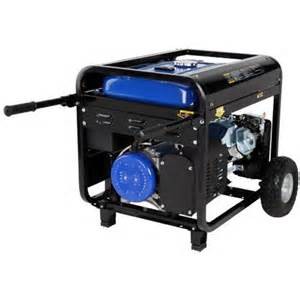
Generators have been around for years and many families may not have considered using them until they experience a power outage or periodic number of outages on a regular basis. Electric power is vital to keep certain electrical appliances or medical equipment running during these times.
Portable generators for home use are more affordable and mobile so they can be placed anywhere they are needed once the power goes out for back-up emergency power.
As you consider a portable generator for your home, you must be aware of your responsibility for the upkeep and the maintenance that these machines require. Generators are fueled by gas, propane, natural gas or diesel and require oil for lubrication.
You will have to ensure that there is sufficient amount of back-up fuel on hand especially during a power outage for diesel or gas powered models and oil as recommended by the manufacture. When using a gas model is it wise to add a fuel stabilizer to the gas to keep it fresh. Sometimes these outages may affect your local gas station and regular gas or diesel fuel may not be available or, if they are, in limited quantities. You must be ready for all types of emergencies.
For more information about portable generators the following topics will be discussed. Click on the topic of interest and you will be taken directly to that section, or scroll down to view them all.
- Homeowners Basic Questions
- Considerations For Buying A Portable Generator
- Transfer Switches
- Conclusion
Homeowners Basic Questions
Below are some of the basic questions that most homeowners might ask themselves when they consider on buying a generator.
What Size Generator Do I Need?
This is probably the most important question that needs to be answered prior to buying a generator. You must decide which appliances will be need to be operating when a power outage occurs. As you determine these appliances, you must also know how much wattage they will require to run and start when generator power is being used. You want a generator that will provide enough starting watts to start these appliances and running watts to keep them on while the generator is operating.
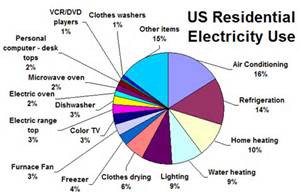
Appliances that have a motor requires starting watts on top of the running watts to keep them operating during the outage.
Generator power is always stated in watts. There are two types of wattage manufacturer’s use in advertising generators and they are starting watts and running watts. Starting watts are those watts needed to start a motor for an appliance. Running watts are those needed to keep the appliance running after the motor has started.
The appliances that have motors will require more watts to start them. After they are started, less power is used to keep them running. To help you find the starting and running watts for some of the most common household appliances, we have a chart that lists these values. Just click on the link. You can print this information so it’s handy for future reference.
Never run your generator continuously with less than 40% load – 50% to 75% is optimum, otherwise you may damage the generator.
A generator that does not provide enough power won’t last and will smoke and cause damage to vital electronic equipment. On the other hand, a generator that has more power than needed, the engine will carbon up, wet stack or slobber and this means excess fuel consumption and causing early failure.
After you have determined the total starting watts and running watts for your home when an outage strikes, you can decide on which type of generator will best provide this power.
Back to Portable Generators for Home Use Topics.
Should I Buy a Portable or Stationary Generator?
This decision should be based upon your need of running electrical equipment. Do you need to provide back-up power to your whole house or just some emergency appliances. If you decided on powering up the entire house, a standby generator will fit this situation. Otherwise, a portable generator will do just fine.
We have provided some information regarding these two types of generators, continue reading below.
Portable Standard Generators
Portable standard generators are being used more and more by Americans to provide emergency back-up power. These generators are less expensive than a stationary generator.
Most portable generators run anywhere from 7-12 hours on a single tank of fuel. In most instances, this will cover the outage as power is generally restored within a few hours. Of course, there are exceptions when the power can be out for days or even weeks.
The portable standard generators have the following advantages:
- Mobile for easy movement from storage to operating location or area
- Less expensive than stationary models
- Access to fuel – Gas, Diesel, or Propane
Stationary or Standby Generators
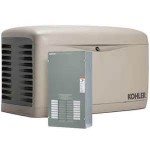
These models are placed in a location that is permanent. They are also more expensive than standard generators. These models are fueled by natural gas or liquid propane. Their objective is to provide emergency power to the whole house at any time the main power goes out. This provides the homeowner a sense of security and comfort in that you do not have to move a standard generator from the storage area outside during inclement weather conditions.
To operate these units they require a transfer switch which must be installed by a qualified electrician. This is an extra expense on top of the cost of the generator. Some stationary generators do not come with a transfer switch which also could add to the cost as well.
The main advantage of this type of generator is that when an outage occurs there is usually a 15 to 20 second delay to allow the generator to kick on, whether you are at home or not, and continues running until power is restored, when it will automatically shut off.
If you should have life support equipment you can install a UPS (uninterruptible power supply, a battery in a special box) and there will be no interruption of power to these devices while the generator starts up.
Back to Portable Generators for Home Use Topics.
Considerations For Buying A Portable Generator
Below are some very important considerations to keep in mind when purchasing a generator. The elevation above sea lever, the air temperature, and humidity.
Back to Portable Generators for Home Use Topics.
Elevation Above Sea Level
The first consideration for all buyers of generators should know is for every 1,000 feet of elevation above sea level you live, you must de-rate the gas powered, diesel, liquid propane generators by 2% and a natural gas model by 5%. For example, if your gas or natural gas generator is rated for a continuous load of 4,000 watts, at a 6,000-foot elevation would only be 3,520 watts for gas powered and 2,800 watts for natural gas models. (4,000 x .12 = 480. 4,000 – 480 = 3,520; 4,000 x .30 = 1,200. 4,000 – 1,200 = 2,800). You need to take the de-rate power of the generator into consideration when calculating the total watts needed to operate all equipment for your elevation above sea level.
Note: For every five hundred feet above sea level equals a 1% de-rate for gas, diesel, and liquid propane models. For natural gas models, five hundred feet above sea level equals a 2.5% de-rate.
Here is an elevation form for you to use, Click Here to access it. Enter your information in the boxes and it will return the elevation for your city.
Back to Portable Generators for Home Use Topics.
Air Temperature
The next consideration is the outside air temperature. For every degree above 25 degrees centigrade (77 degrees Fahrenheit), take away 0.2%. If the temperature is 36 degrees centigrade (96.8 Fahrenheit) take 0.2 x 11 = 2.2%. 4,000 x .022% = 88 watts for all generator models. This is the de-rate value.
Back to Portable Generators for Home Use Topics.
Humidity
The next consideration is the outdoor humidity. Subtract 1.5% for every 10% of relative humidity above 30%. If the humidity is 50%, based on our formula, 1.5 x 2= 3%. .03 x 4,000 = 120 watts. For our 4,000 watt generator the de-rate value is 120 watts for all generator models.
Back to Portable Generators for Home Use Topics.
Our Example
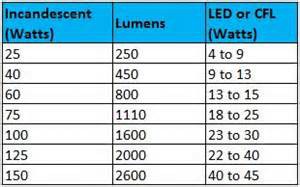
For the gas powered model: Elevation de-rate is 480 watts, Temperature de-rate is 88 watts, and Humidity de-rate is 120 watts. 480+88+120 = 688 watts. 4,000 – 688 = 3,312 watts. If you need a generator to operate at 4,000 watts you need to add 688 watts to it to power the equipment needing 4,000 running watts to run.
For the natural gas model: Elevation de-rate is 1,200 watts, Temperature de-rate is 88 watts and Humidity de-rate is 120 watts. 1,200+88+120 = 1,408 watts. 4,000-1,408 = 2,592 watts. This model generator would provide a total running watts of 2,592 at 6,000 feet, 36 degrees centigrade, and 50% humidity. You would need to add 1,408 watts to operate electrical equipment or appliances that requires 4,000 running watts of power to run.
Back to Portable Generators for Home Use Topics.
Placement of Generator
The next consideration is the placement or the location of the generator. If you are planning on using a gas powered model, it must be at a minimum of 6-feet away from doors, windows, and have sufficient ventilation to prevent any carbon monoxide odors getting into the house. It must also be away from anything that is combustible as the motor gets hot. Natural gas models can be closer to the home as they don’t give off carbon monoxide odors.
Back to Portable Generators for Home Use Topics.
Frequency of Generator Models
All generators sold in the United States and Canada use a fixed frequency of 60 Herz (Hz), and 50 Herz (Hz) in Europe and Australia. Most engines run at either 1800 or 3600 RPM’s.
Back to Portable Generators for Home Use Topics.
Features And Benefits To Look For
Below are some features and benefits you need to look for when buying a generator.
- Air or liquid cooling – Air cooled engines require lots of air and are somewhat noisier. Liquid cooled engines offer a quieter operation and provides for a longer engine life.
- Intake Air – All quality generators have intake air filters with replaceable filter elements.
- Lubrication – The lubrication system should have a full flow, spin-on oil filter. Most generators have low oil alarms and shutdowns to protect the engine. This is a must feature to look for any generator.
- Buy a major brand engine model over some inferior off brand engine.
- Start/Stop switch.
- System circuit breaker to protect the generator.
Back to Portable Generators for Home Use Topics.
Transfer Switches
A transfer switch is used to distribute power from the generator to the home’s circuit box. Using a transfer switch eliminates the need in using multiple extension cords from the generator to specific appliances.
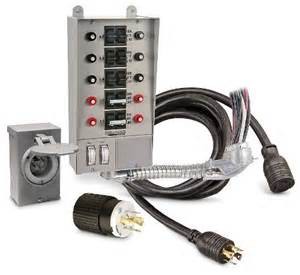
Installation of a transfer switch requires you to hire a licensed electrician. This is to prevent electrical “back feed” which can injure utility workers working on downed utility lines.
Once the generator is running, you can choose which circuits you want to use by flipping the switches on the transfer switch.
For standard generators during an outage, you just crank up the generator and run a single extension cord from it to the transfer switch.
Select a transfer switch that covers the amperage of your electrical needs during a power outage. The more powerful generator; the more circuits you can power. As a rule of thumb, a 5,000 watt generator can restore power to six circuits.
Transfer switches are available in larger amp sizes. Determine which transfer switch is best for your needs.
Back to Portable Generators for Home Use Topics.
Conclusion
As you can see, knowing the type of generator you need and budget will help you in finding a generator that will supply emergency back-up power to important electrical appliances you need to have on during an outage. We have provided you with lots of information to help you make this decision. Remember, find the generator model type that is best for your situation. Each situation will be different and is dependent on where you live.
Back to Portable Generators for Home Use Topics.
